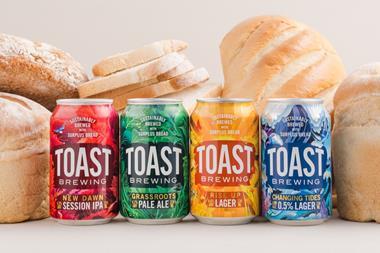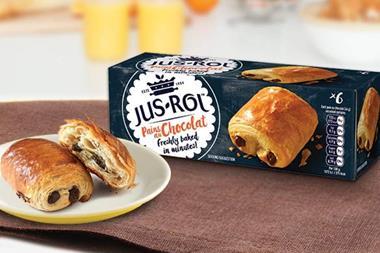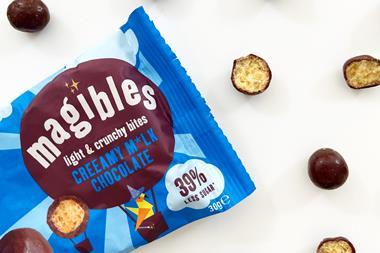Consumers may not realise how easy it is to replicate a great dining experience in their own homes
One of the most hotly contested sectors of the overall market is that of pickles and chutneys, currently worth £63m, although the category is stagnant, dropping in value by 0.2%.
This is the arena where there is much flavour innovation as some of the smaller brands jostle for the attention of consumers whose tastes are broadening as they holiday abroad.
Patak’s, Geeta’s and Sharwood’s are the focal points of the Indian fixture, boosted by the growing popularity of Indian fine dining.
But they are looking to retailers to help them out with dual siting.
“Consumers shopping the Indian food fixture are looking for new flavours so it’s eminently logical that our products should be there,” says Patak’s group director for marketing Fiona Mannion.
“It hasn’t dawned on a lot of people that the pickles and chutneys they get
in restaurants are the ones we do and we need to communicate that.
“The way to open up opportunities is dual siting.”
If more consumers understood the Indian relishes sector, argues founder and director of Geeta’s, Geeta Samtani, the market would open up much more. She says chutneys are very versatile: “It’s like matching your clothes.”
Her company takes part in consumer shows throughout the year and its
educational marketing activity also includes in-store sampling. It is in the process of putting together a free booklet for consumers.
Sharwood’s has jumped on the squeezy bandwagon with its green Label Mango Chutney, which was launched this month.
It says it has taken its team of ‘spiceologists’ more than a year to perfect a mango chutney recipe that can be squeezed out of a bottle.
There’s been similar experimentation in the more traditional arena, with Branston moving into the format just last year in an attempt to target the sandwich market.
Brand owner Premier Foods’ general manager Sue Knight says: “We are trying to drive use in sandwiches and the squeezy bottle makes it easier, with its small chunk format. It needs to get through the nozzle but be easier to use in sandwiches. If we just added one more sandwich to each person’s intake we could double the market.”
Branston pickle has also been given a makeover for the first time in its 80-year history in time for Christmas.
The product is being packaged in larger-lidded jars that are easier to open in 360g, 520g and 720g sizes to
give consumers greater choice.The iconic brand has also this year launched a range of relishes in tomato and red pepper, sweet onion, hot chilli and jalapeno and gherkin flavours which, it says, has taken the relish market from decline into growth.
Premier Foods says: “The relish sector is worth £7.2m and growing at 4.6% year on year [IRI MAT July 23, 2005]. Prior to the launch of Branston Relishes the sector was previously in 7% decline.” [52 weeks to May 21, 2005]
Meanwhile, Epicure brand manager John Holland-Pemble says there is a polarising of the pickles and chutneys sector, pointing out that Epicure is a very traditional brand, but saying there are plenty of “weird and wacky” new flavours. “Some stick and a lot come and go,” he says.
One of the most hotly contested sectors of the overall market is that of pickles and chutneys, currently worth £63m, although the category is stagnant, dropping in value by 0.2%.
This is the arena where there is much flavour innovation as some of the smaller brands jostle for the attention of consumers whose tastes are broadening as they holiday abroad.
Patak’s, Geeta’s and Sharwood’s are the focal points of the Indian fixture, boosted by the growing popularity of Indian fine dining.
But they are looking to retailers to help them out with dual siting.
“Consumers shopping the Indian food fixture are looking for new flavours so it’s eminently logical that our products should be there,” says Patak’s group director for marketing Fiona Mannion.
“It hasn’t dawned on a lot of people that the pickles and chutneys they get
in restaurants are the ones we do and we need to communicate that.
“The way to open up opportunities is dual siting.”
If more consumers understood the Indian relishes sector, argues founder and director of Geeta’s, Geeta Samtani, the market would open up much more. She says chutneys are very versatile: “It’s like matching your clothes.”
Her company takes part in consumer shows throughout the year and its
educational marketing activity also includes in-store sampling. It is in the process of putting together a free booklet for consumers.
Sharwood’s has jumped on the squeezy bandwagon with its green Label Mango Chutney, which was launched this month.
It says it has taken its team of ‘spiceologists’ more than a year to perfect a mango chutney recipe that can be squeezed out of a bottle.
There’s been similar experimentation in the more traditional arena, with Branston moving into the format just last year in an attempt to target the sandwich market.
Brand owner Premier Foods’ general manager Sue Knight says: “We are trying to drive use in sandwiches and the squeezy bottle makes it easier, with its small chunk format. It needs to get through the nozzle but be easier to use in sandwiches. If we just added one more sandwich to each person’s intake we could double the market.”
Branston pickle has also been given a makeover for the first time in its 80-year history in time for Christmas.
The product is being packaged in larger-lidded jars that are easier to open in 360g, 520g and 720g sizes to
give consumers greater choice.The iconic brand has also this year launched a range of relishes in tomato and red pepper, sweet onion, hot chilli and jalapeno and gherkin flavours which, it says, has taken the relish market from decline into growth.
Premier Foods says: “The relish sector is worth £7.2m and growing at 4.6% year on year [IRI MAT July 23, 2005]. Prior to the launch of Branston Relishes the sector was previously in 7% decline.” [52 weeks to May 21, 2005]
Meanwhile, Epicure brand manager John Holland-Pemble says there is a polarising of the pickles and chutneys sector, pointing out that Epicure is a very traditional brand, but saying there are plenty of “weird and wacky” new flavours. “Some stick and a lot come and go,” he says.
















No comments yet